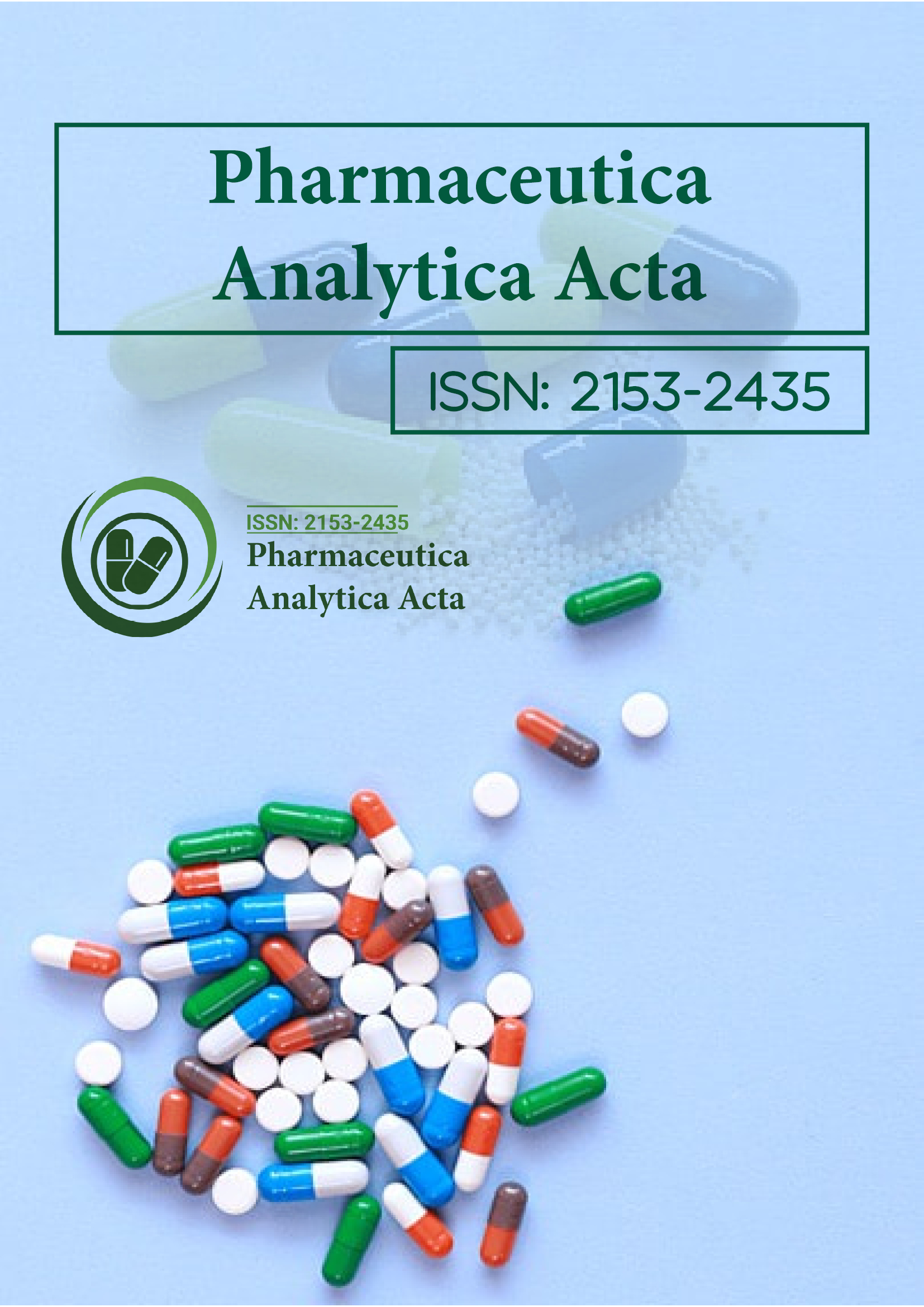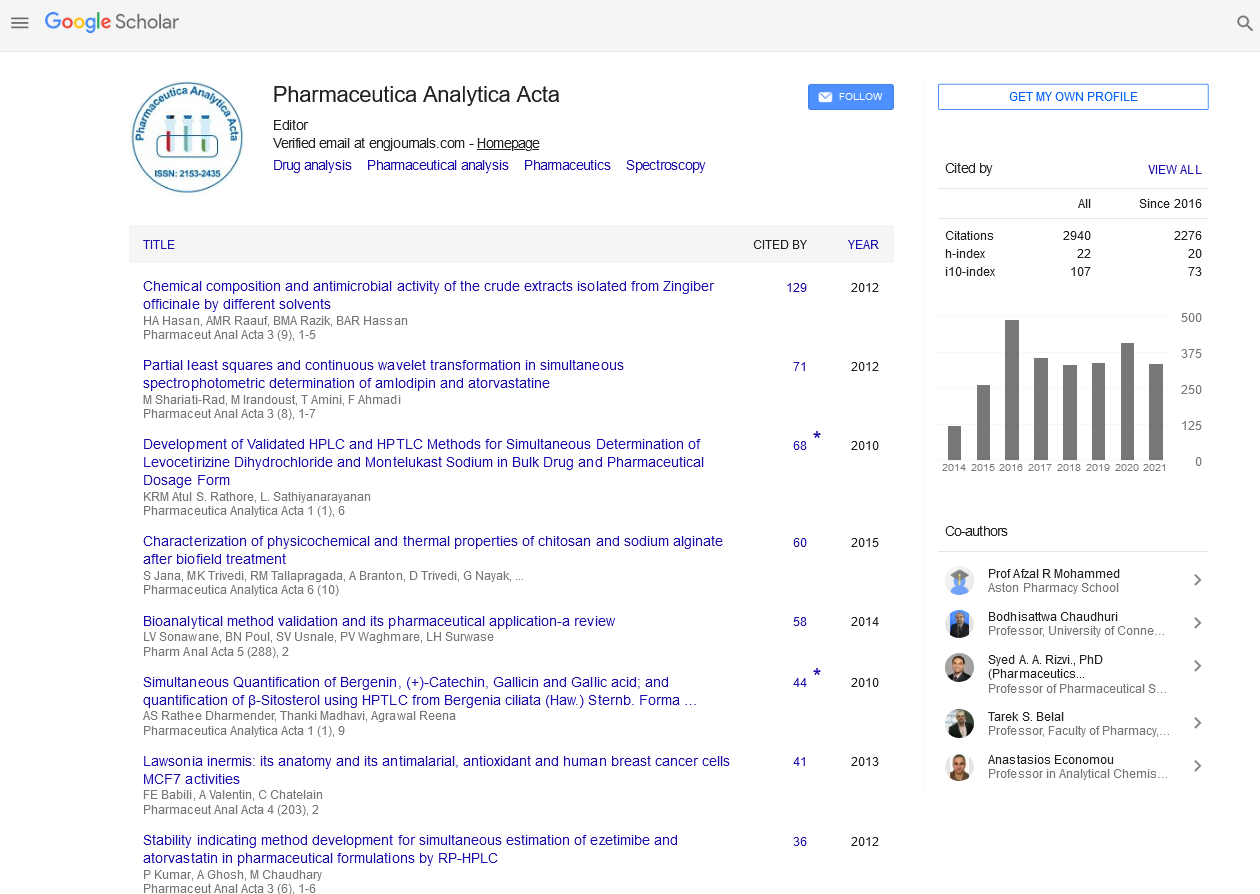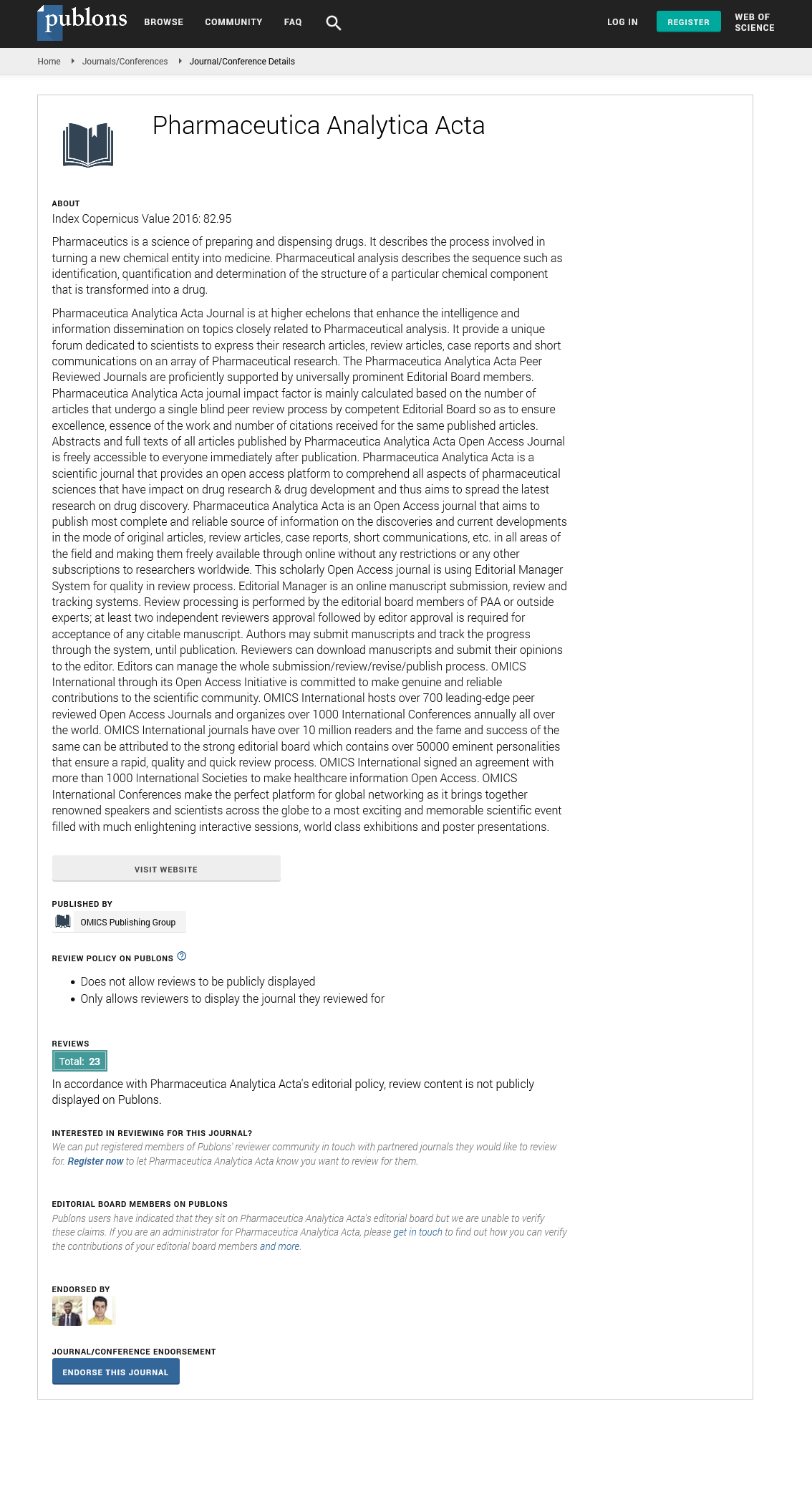Indexed In
- Open J Gate
- Genamics JournalSeek
- Academic Keys
- JournalTOCs
- The Global Impact Factor (GIF)
- China National Knowledge Infrastructure (CNKI)
- Ulrich's Periodicals Directory
- RefSeek
- Hamdard University
- EBSCO A-Z
- OCLC- WorldCat
- Publons
- Geneva Foundation for Medical Education and Research
- Euro Pub
- Google Scholar
Useful Links
Share This Page
Journal Flyer

Open Access Journals
- Agri and Aquaculture
- Biochemistry
- Bioinformatics & Systems Biology
- Business & Management
- Chemistry
- Clinical Sciences
- Engineering
- Food & Nutrition
- General Science
- Genetics & Molecular Biology
- Immunology & Microbiology
- Medical Sciences
- Neuroscience & Psychology
- Nursing & Health Care
- Pharmaceutical Sciences
Effect of multiple peak phenomena on Bioequivalence results
2nd World Congress on Bioavailability & Bioequivalence: Pharmaceutical R & D Summit-2011 and International Conference on Pharmaceutics & Novel Drug Delivery Systems
2011
Sima Sadrai, Maryam Aryapoor, Hoda Lavasani
Tehran University of Medical Sciences, School of Pharmacy, Iran
Scientific Tracks Abstracts: Pharm Anal Acta
Abstract:
Many drugs when given orally demonstrate multiple peak phenomena in their concentration – time profi les and the eff ects of this phenomenon on the results is considered in a cetirizine bioequivalence study. Bioequivalence of test tablet with reference tablet were compared in 22 healthy volunteers who received two 10mg tablets of cetirizine in a randomized blind cross over design. Blood samples were collected at 0, 0.25, 0.5, 0.75, 1, 1.5, 2, 3, 4, 6, 8, 10, 12, 24 and 30 hours.RP-HPLC system consisted of a C18 Nucleosil column 100×4 mm and mobile phase: buff er KH2PO4(PH=3),methanol and acetonitrile (53:40:7), fl ow rate: 1.4ml/min, oxazepam as internal standard and UV detection at 235nm was performed. Th e pharmacokinetic parameters mean±S.D of test tablet(Cetirizine): AUC(0-T)(2295.32±711.87)ng/ml*hr, AUC(0-∞)(3343.68±2402.76) ng/ml*hr, Cmax1(288.00±114.71) ng/ml, Cmax2(190.56±71.93) ng/ml, Tmax1(0.76±0.33)hr and Tmax2(3.84±2.05)hr. Th e pharmacokinetic parameters mean±S.D of reference tablet (Zyrtec): AUC(0-T)(2846.16±1156.32) ng/ml*hr, AUC(0-∞) (3693.68±2215.64) ng/ml*hr, Cmax1(332.33±151.41) ng/ml, Cmax2(299.52±113.01) ng/ml, Tmax1(0.93±0.39)hr and Tmax2(3.57±1.96)hr. Th e 90% confi dence interval are as follows: AUC(0-T):67.9-104.1%, AUC(0-∞):67.4- 118.2%, Cmax1:66.5-110.7%, Cmax2:69.7-110.0%, Tmax1:63.0-99.5%, Tmax2:84.5-130.5%. Th erefore the two products were not bioequivalent (out of acceptable 0.8-1.25% range ). E.g. three methods for evaluation of AUC(0-∞) were applied. Method A: fi nal ke aft er last peak, method B: mean ke and method C: ke calculated from fi nal 4 or 5 points concentration – time curve. T-test between method A and B, A and C, B and C have demonstrated meaningful diff erence (p<0.005) between method A with B(0.017) and B with C(p<0.004). Multiple peak phenomena should be considered in bioequivalence studies and more details will be discussed.
Biography :
Dr Sima Sadrai has completed her Ph.D from Tehran University of Medical Sciences 1995 about population pharmacokinetics of theophylline and postdoctoral studies from Uppsala University School of Pharmacy by Professor Mats Karlsson. She is associate professor in Tehran University of Medical Sciences. She has twenty two years teaching experience with special interest in pharmacokinetics modeling. She has published more than 20 papers and review in reputed journals.


